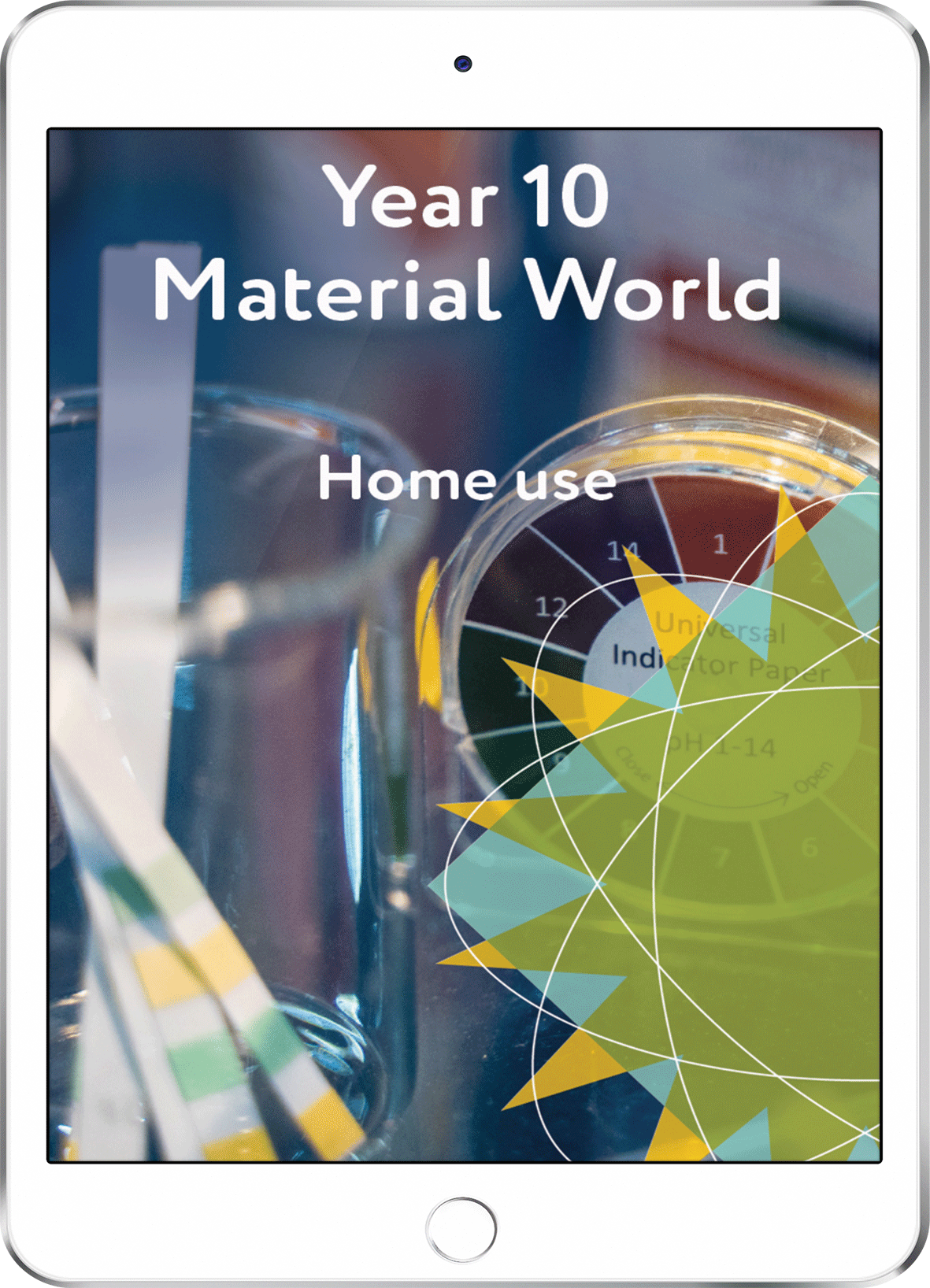Year 10 Material World - Home Use
Year 10 Material World - Home Use
LearnWell Digital
This version of the resource is for home use. Students work independently through the resource. If you are a teacher, you should purchase the school use version.
Couldn't load pickup availability
This resource covers the things you need to know and be able to do for the Material World topic of Year 10 Science.
The ‘Material World’ is the world of matter, dealing with substances – what they’re made of and how they behave and react – their chemistry.
What you'll learn
In this course you'll work through five main sections:
1. Atoms
In this section, we'll explore the structure of these tiny building blocks that make up all the matter in our universe, elements and ions, as well as the way that ions bond together to form compounds.
2. Pure substances and mixtures
In this section, we'll start by looking at the differences between pure substances and mixtures, then explore types of mixtures in more detail and get an understanding of how mixtures can be separated out into their component parts using a range of methods.
3. Acids and bases
In this section, you'll gain an understanding of what acids and bases are and the differences between the two, as well as what happens when they're involved in various reactions. You'll also learn about pH and how it can be measured.
4. Metals
In this section, we'll explore metals, metalloids and alloys, properties of metals, the activity series for metals, and common reactions metals have with oxygen, water and acids.
5. Fuels
In this final section, you'll learn about a range of non-renewable and renewable fuel sources, with a focus on where they're found in Aotearoa New Zealand, and how they're used.
This resource will give you a good grounding in the basic knowledge, language and skills you need to take forward to science in Years 11 to 13 when 'the material world' gets called Chemistry.
LearnWell Digital resources put the learner at the centre. Using almost any device, students can easily work at a pace that suits them through interactive, scaffolded learning and activities.
This resource brings you the same great learning as the printed Learning Guide, but in a digital format.
For the print format of this resource, click here.
For Equipment Requirement list, click here.
Click here to view our bundle option
You can find out more on the information page about our LearnWell Digital resources.

